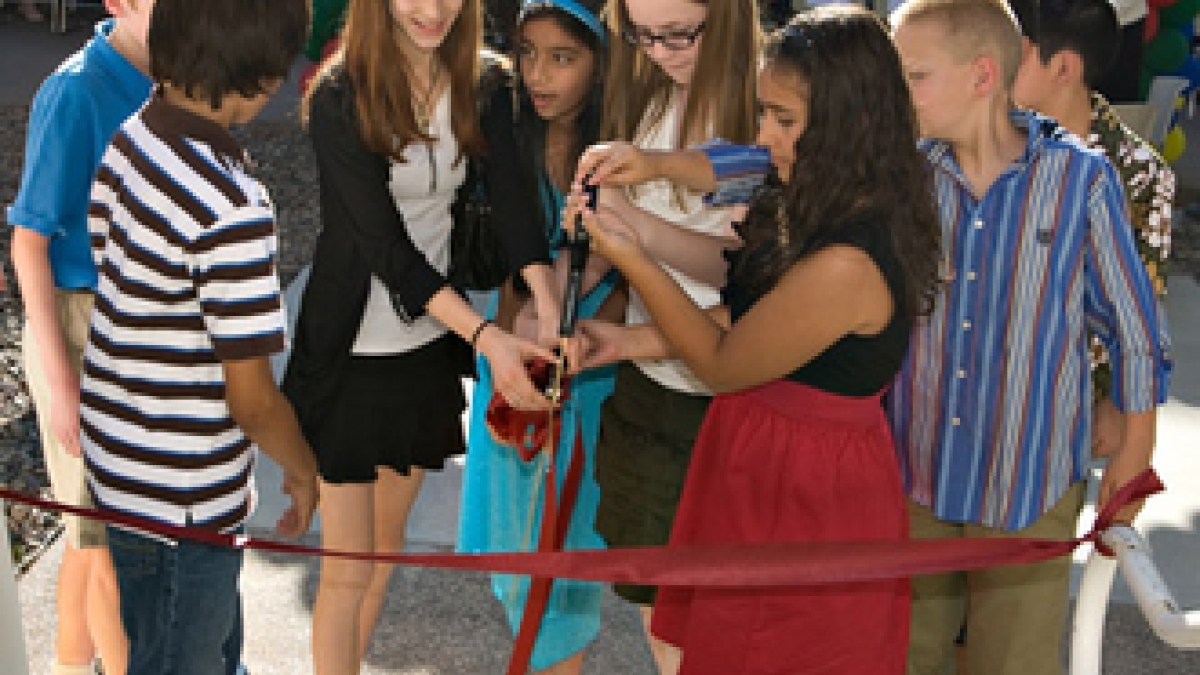Herberger Strategic Investment Fund launches

Fund supports Young Scholars Academy and Digital Culture Initiative
In addition to the tens of thousands of ASU students who are starting classes this week, several dozen middle school students began their semester on campus at the Gary K. Herberger Young Scholars Academy.
The academy, which addresses the needs of unusually gifted students, was founded last year through The Herberger Strategic Investment Fund, which was established by a $20-million gift from university benefactors Gary K. and Jeanne L. Herberger.
The fund, part of the University’s Strategic Investment Program, is administered by the President’s Office and provides resources on a competitive basis to individual ASU units to launch, initiate and secure substantial additional funding for programs of strategic importance to the university, in particular:
• activities associated with the emergence of new strategic intellectual activities linking programs in design with those in the arts;
• collaborative initiatives between programs in design and those in the arts;
• major specific initiatives in the fields of design and the arts; and
• the launching of the gifted child program in association with Barrett, the Honors College.
“Gary and Jeanne Herberger, long-time supporters of ASU, are not only great philanthropists but they are visionaries as well,” said ASU President Michael M. Crow. “Their investment targets areas of societal need and areas of interdisciplinary development in arts and design. By establishing a discretionary seed fund, they allow the university to move quickly into exciting new areas, many of which will ultimately find sources of continued funding.”
The Young Scholars Academy, for example, addresses an often overlooked need: the unique educational, social and emotional needs of gifted young adolescents. Students enter the Herberger Academy at the start of seventh grade and embark on a challenging curriculum, completing seventh- and eighth-grade coursework in their first year, ninth- and 10th-grade coursework the second year, and 11th- and 12th-grade coursework during the third.
There is an experiential portion of the curriculum that begins with class visits from ASU professors and trips to campus labs and local businesses. As students progress through the five-year program, they will select areas of interest to explore; sit in on ASU classes; pursue independent study under direction of experts in their chosen fields; and complete annotated bibliographies and research projects.
During their fourth and fifth years, the students will take coursework through ASU’s New College of Interdisciplinary Arts and Sciences and augment those studies through Barrett, the Honors College.
The Digital Culture Initiative, also supported by The Herberger Strategic Investment Fund, offers specially designed courses from across the Herberger Institute’s six schools as well as the Ira A. Fulton Schools of Engineering, the College of Liberal Arts and Sciences, the W. P. Carey School of Business, the Mary Lou Fulton Teachers College, the College of Technology and Innovation, the New College Division of Humanities, Arts and Culture Studies, and the Walter Cronkite School of Journalism and Mass Communication. Using a customizable interactive course and path planner, students are able to map out their path to graduation based on their subject interests and long-term aspirations.
If a student, for example, with an interest or background in art and film would like to investigate interactive animation, they can design a multi-year educational path to allow them to graduate with a wide set of core proficiencies that employers like Pixar Animation Studios or Electronic Arts find appealing. If that student finds midway that their interests have changed based on a dance, engineering or education class, they are able to adjust their path to accommodate their new goals.
“The establishment of the Young Scholars Academy is a great achievement and one that may well serve as a model for other universities,” Crow said. “And The Digital Culture Initiative is an innovative program in the growing intersection of the fields of art, design and technology, both programs made possible by The Herberger Strategic Investment Fund.”
Jeanne Lind Herberger earned her bachelor's, master's and doctorate degrees from ASU’s Hugh Downs School of Human Communication. She is a leading philanthropist who has supported education, community services and the arts. She is an influential advocate for the arts and among her many community activities, she recently was appointed as a life member of the Board of Trustees of the Phoenix Symphony.
Gary Kierland Herberger, a long-time supporter of ASU’s College of Design, is president of Herberger Enterprises, Inc., a family corporation involved in land acquisition, and the planning and development of commercial, industrial and residential property. He has been a supporter of and advisor to ASU’s Master of Real Estate Development Program.
In 2000 the College of Fine Arts was named The Katherine K. Herberger College of Fine Arts in honor of Gary’s mother, arts philanthropist Katherine K. Herberger. In 2007, the name was changed to the Herberger College of the Arts to reflect the evolution of more traditional fine arts to diverse new media of expression and creativity. In 2009 the College of Design was folded into Herberger, with the combined entity being renamed the Herberger Institute for Design and the Arts.